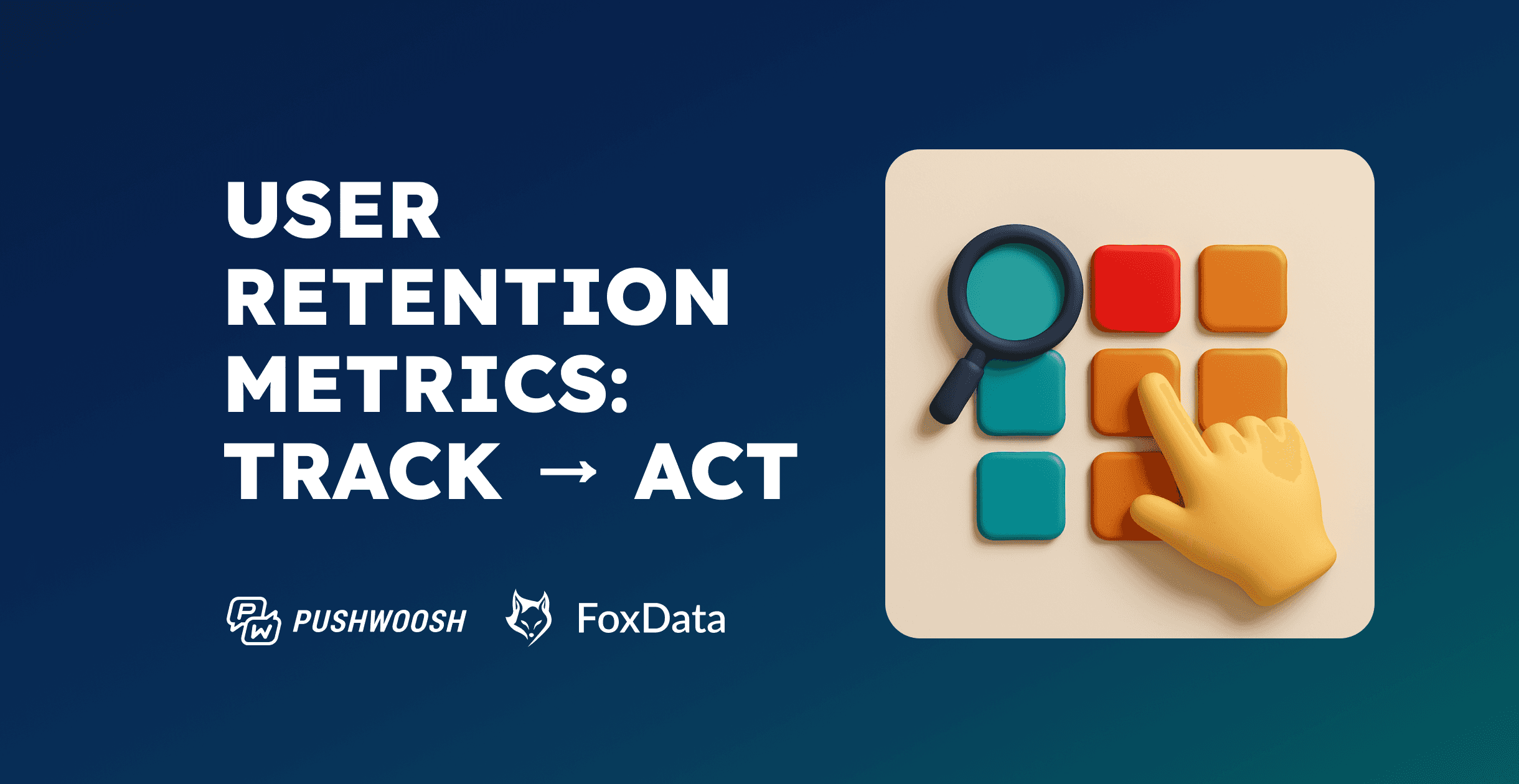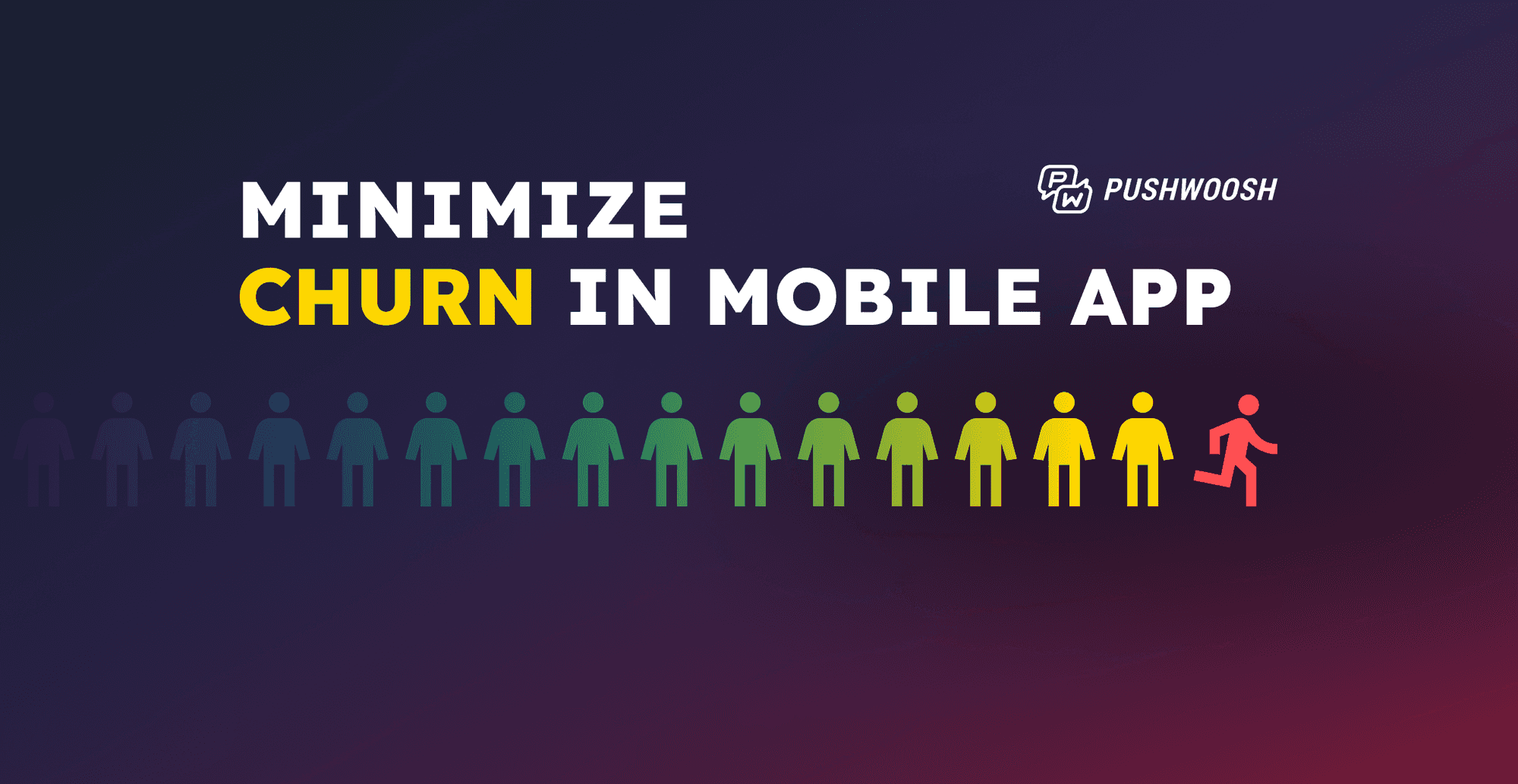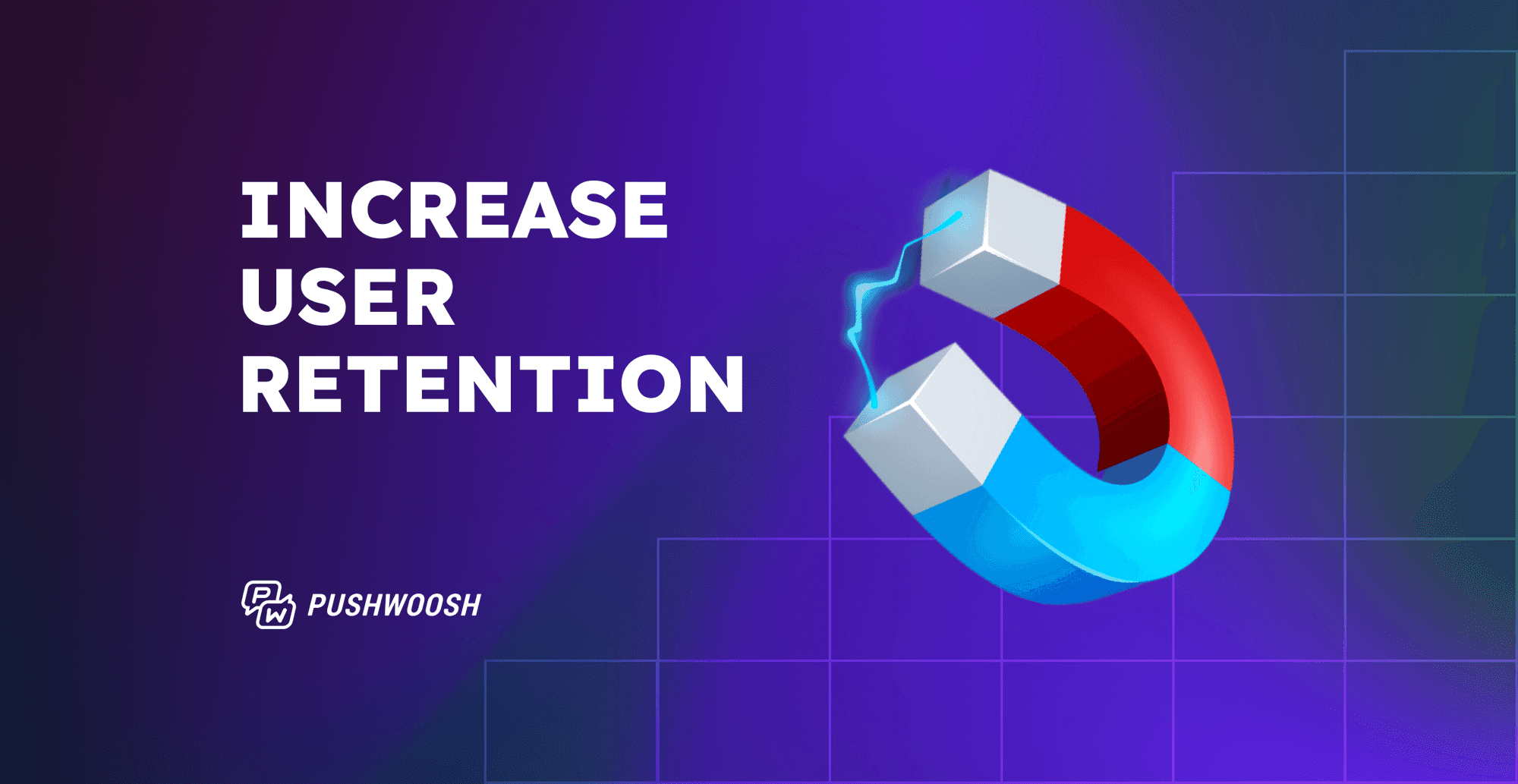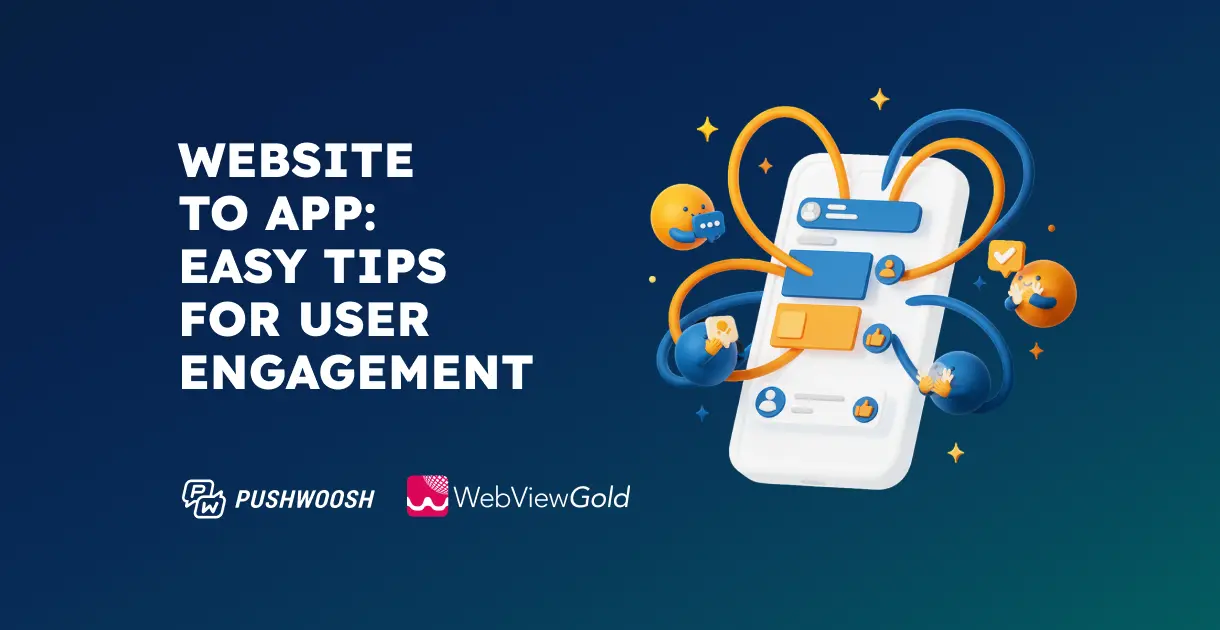From metrics to meaning: Making user retention data actionable
Tracking traditional user retention metrics—like Day 1, Day 7, or Day 30 retention—in isolation can be misleading or even risky. These numbers become genuinely valuable only when connected directly to user behaviors and business outcomes.
In this post, we’ll show how to move beyond surface-level analytics to discover actionable insights and revenue opportunities.
The pitfalls of traditional retention metrics
Most app marketers track daily active users (DAU), weekly active users (WAU), and monthly active users (MAU). While these aren’t strictly retention metrics, they’re often used to spot general trends. The problem is that they don’t tell you why users return to the app day after day— or why they churn.
Classic metrics like Day 1, Day 7, and Day 30 retention rates and churn rates are essential to track but limited.
- Day 1 retention tells you about onboarding success but lacks deeper insights into long-term user value.
- Day 7 retention highlights early engagement but doesn’t clarify what exactly motivates users to continue using or abandon your app.
- Day 30 retention indicates stickiness but provides limited actionable context if viewed alone.
Meanwhile, churn remains high. Many apps lose 77% of their daily active users by Day 3, and less than 1% remain by Day 30.
This means a significant portion of user acquisition budgets is wasted. For instance, if you acquire 10,000 users at an average cost of $5 each ($50,000 total) and retain only 1% after a month (100 users), your cost per retained user is $500.
And if your user acquisition cost is closer to $10, that number doubles.
This alarming scenario highlights why retention-driven ROI is crucial.
Actionable retention metrics: Beyond basics
To go beyond surface-level insights, focus on deeper, more actionable analytics:
- Behavior-based retention: Segment users by key actions (e.g., completed onboarding, activated a premium feature). Identify precisely which behaviors are tied to long-term engagement.
- Cohort-based retention: Group users based on attributes like acquisition channel, geography, or install date. Analyzing retention at this granular level helps identify the most profitable segments.
- Journey-stage retention: Evaluate retention at different app lifecycle stages—onboarding, growth, maturity—to pinpoint exactly where users lose interest.

- Lifetime value (LTV) and ROI: Measure the revenue contribution of retained users over their lifecycle to make informed decisions on user acquisition and retention investments.
Tracking these metrics longitudinally through cohort analysis reveals deeper insights. For example, if retention improves significantly after a feature update or a targeted push campaign, you’ve uncovered a valuable lever to pull repeatedly.
Turning retention data into actionable insights
Deep analysis transforms your raw retention data into actionable business intelligence:
Cohort and behavioral analysis
Don’t just group users by time; segment them by meaningful behaviors or feature adoptions. For instance, users who interact with your core features within the first 48 hours may have significantly higher retention. Identifying and promoting these key interactions can drive substantial retention gains.

Funnel drop-off analysis
Use funnel analysis to pinpoint exactly where user drop-offs happen. Are users leaving after onboarding, during checkout, or while attempting to use a complex feature? This specificity helps you take targeted action.
Predictive churn analytics
Leverage predictive modeling to anticipate churn risks based on behavioral patterns (like decreased session frequency or reduced feature usage). Early identification allows proactive re-engagement rather than reactive retention efforts.
Quantifying impact factors
Statistically assess how different variables, such as app features, product updates, and marketing initiatives, impact retention.
For example, if a push notification campaign reduces Day 7 churn by 10%, it’s clearly worth scaling.
From insights to effective omnichannel engagement
With detailed insights, craft omnichannel engagement strategies precisely tailored to user behaviors and needs:
Strengthen onboarding and first impressions
Your data might show users dropping sharply on Day 1. Your actions?
Enhance your onboarding sequence to clearly showcase the immediate value. Deliver timely push notifications or contextual in-app messages highlighting features correlated with high retention — and keep track of what happens next. For example, your retention analytics in Pushwoosh may reveal that users who opt in for push notifications during their first session are twice as likely to stay beyond Day 7 (see the charts below). In this case, you may want to promote notification setup immediately upon first app launch.

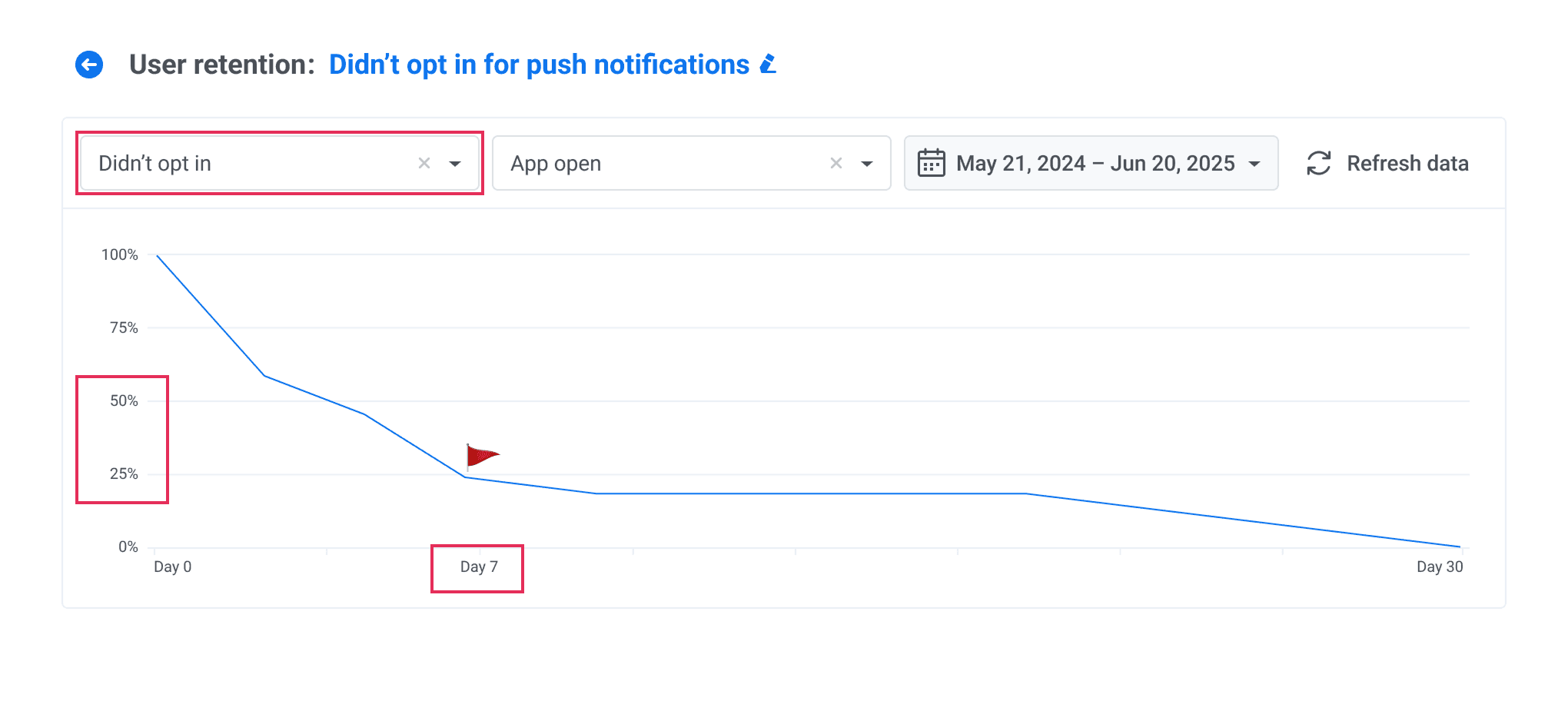
Timely and relevant re-engagement
If retention analysis indicates significant churn around Day 7 or Day 14, target these windows with personalized push campaigns or email re-engagement sequences. Consider special offers, reminders, or valuable content that addresses identified pain points. For regions showing lower retention, customize timing and localize messages. Pushwoosh helps you do it in seconds with its newly updated AI translator:
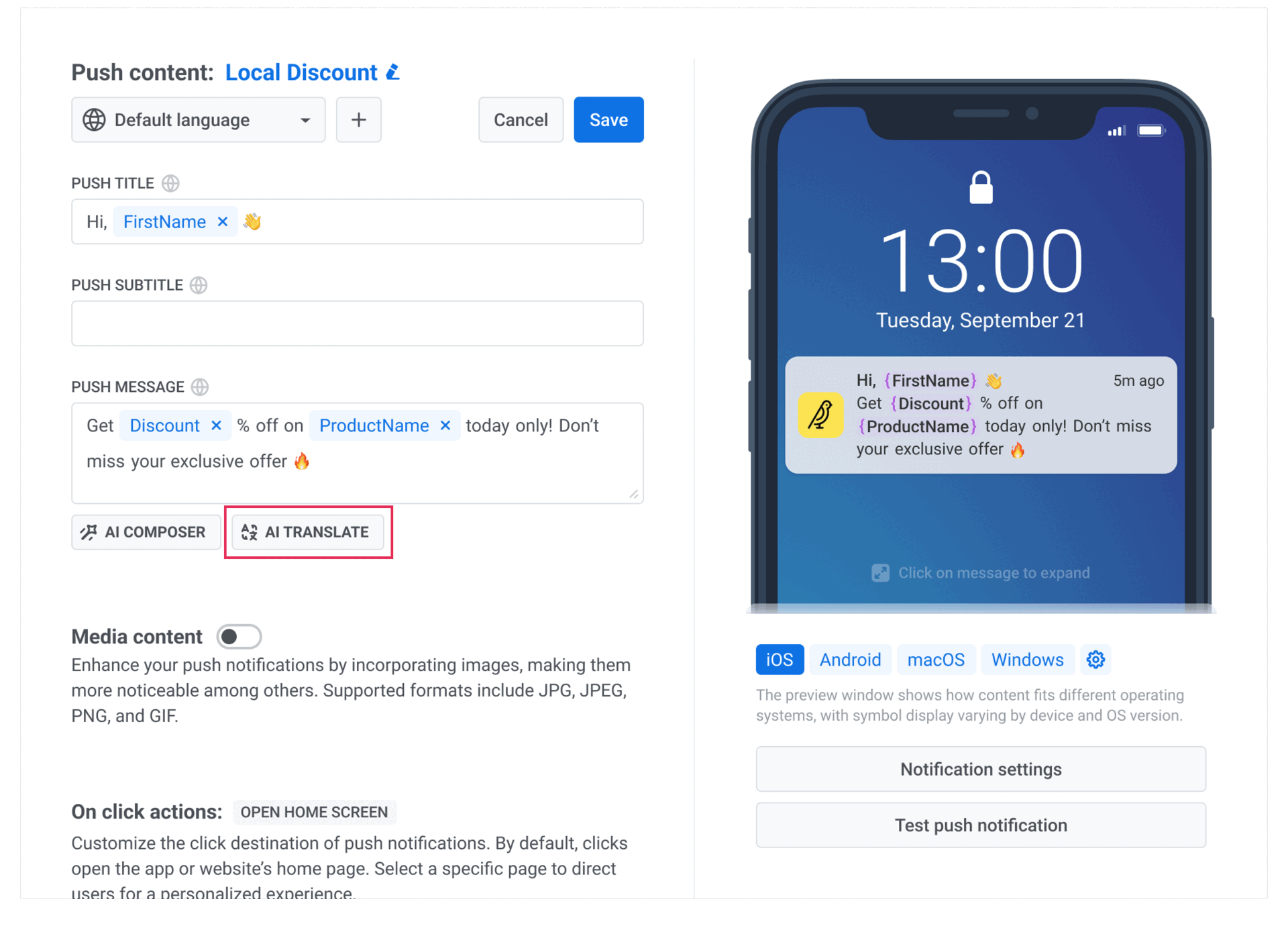
Additionally, spacing out notifications strategically ensures higher engagement rates and fewer opt-outs.
Continuous measurement and iteration
After each campaign or product update, meticulously track retention improvements through new cohorts.
- Did churn rates reduce?
- Is LTV increasing among engaged segments?
Iterative refinement based on concrete retention data creates a sustainable growth loop.
Consistently analyzing, acting, measuring, and refining ensures your retention strategy continually adapts, reducing churn, boosting LTV, and significantly enhancing ROI.
Conclusion
Tracking traditional retention metrics alone provide limited value and may lead to misguided decisions. To truly grow, apps must deeply connect these metrics to specific business outcomes, analyze user behavior at a granular level, and act decisively based on data-driven insights. By transforming retention data into actionable strategies, you create lasting user engagement and sustainable growth.

